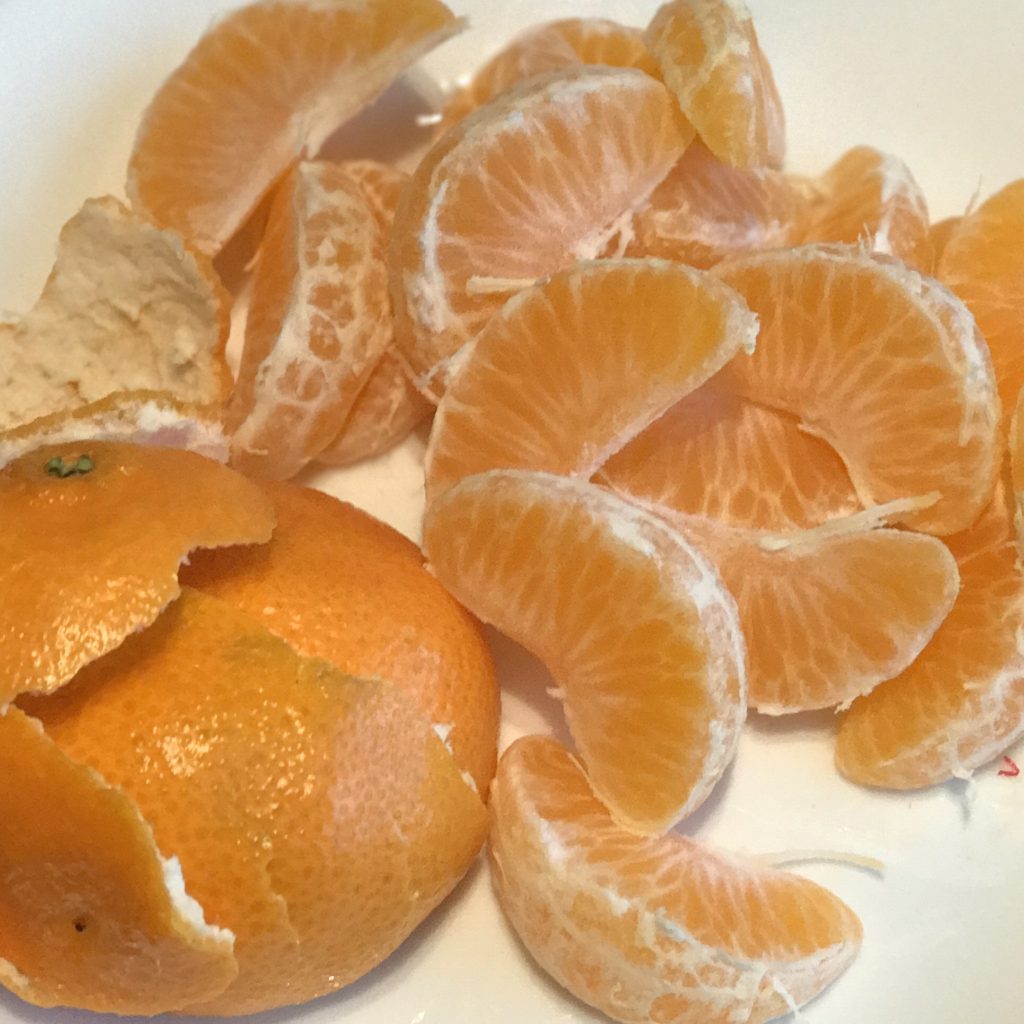
In my continuing quest to end my sixtieth year in better overall health than I’ve started it, I’m scrapping the diet plans and quick fixes in favor of smaller, realistic, impactful changes over the course of the year. I am trying to alternate tweaks to exercise, diet and lifestyle every couple of weeks so they don’t feel too drastic or overwhelming at once.
My first commitment was to walk 30 minutes every day. While I admit I’ve missed three days since going public, I can also say that nearly every walk has been more like 45-50 minutes; catching up with Jimmy Fallon while on the treadmill or going for a 2.5 mile walk around my neighborhood. Fortunately, the recent weather has made the outdoors much more inviting. The best news is that this daily walk is part of my mindset. If the day is passing by and I have not walked yet, I find myself making the time to do it.
As for food…what I do not eat enough of during the winter months is fresh fruit. For some reason there’s a disconnect in my mind between cold weather and produce. Or, maybe, it really isn’t quite as good in January as it is in June! What do you think?
But, I know I can do better. I need to do better. Eating an orange, an apple, a banana, or a handful of grapes is much better for my present and future mental and physical health than grabbing a handful of crackers or potato chips.
My #AgingWell commitment: Eat a cup of fresh, frozen or dried fruit every day. Whenever possible, I will choose whole fruits to maximize the health benefits.
What are you doing to age well?
~ ~ ~ ~ ~ ~ ~ ~ ~ ~
Further reading, courtesy of choosemyplate.gov:
Why is it important to eat fruit?
Eating fruit provides health benefits — people who eat more fruits and vegetables as part of an overall healthy diet are likely to have a reduced risk of some chronic diseases. Fruits provide nutrients vital for health and maintenance of your body.
Nutrients
- Most fruits are naturally low in fat, sodium, and calories. None have cholesterol.
- Fruits are sources of many essential nutrients that are underconsumed, including potassium, dietary fiber, vitamin C, and folate (folic acid).
- Diets rich in potassium may help to maintain healthy blood pressure. Fruit sources of potassium include bananas, prunes and prune juice, dried peaches and apricots, cantaloupe, honeydew melon, and orange juice.
- Dietary fiber from fruits, as part of an overall healthy diet, helps reduce blood cholesterol levels and may lower risk of heart disease. Fiber is important for proper bowel function. It helps reduce constipation and diverticulosis. Fiber-containing foods such as fruits help provide a feeling of fullness with fewer calories. Whole or cut-up fruits are sources of dietary fiber; fruit juices contain little or no fiber.
- Vitamin C is important for growth and repair of all body tissues, helps heal cuts and wounds, and keeps teeth and gums healthy.
- Folate (folic acid) helps the body form red blood cells. Women of childbearing age who may become pregnant should consume adequate folate from foods, and in addition 400 mcg of synthetic folic acid from fortified foods or supplements. This reduces the risk of neural tube defects, spina bifida, and anencephaly during fetal development.
Health benefits
- Eating a diet rich in vegetables and fruits as part of an overall healthy diet may reduce risk for heart disease, including heart attack and stroke.
- Eating a diet rich in some vegetables and fruits as part of an overall healthy diet may protect against certain types of cancers.
- Diets rich in foods containing fiber, such as some vegetables and fruits, may reduce the risk of heart disease, obesity, and type 2 diabetes.
- Eating vegetables and fruits rich in potassium as part of an overall healthy diet may lower blood pressure, and may also reduce the risk of developing kidney stones and help to decrease bone loss.
- Eating foods such as fruits that are lower in calories per cup instead of some other higher-calorie food may be useful in helping to lower calorie intake.
Source: Fruits: Nutrients and Health Benefits by choosemyplate.gov
Photo credit: Clementine sections by El Biddulph, January 2017.

